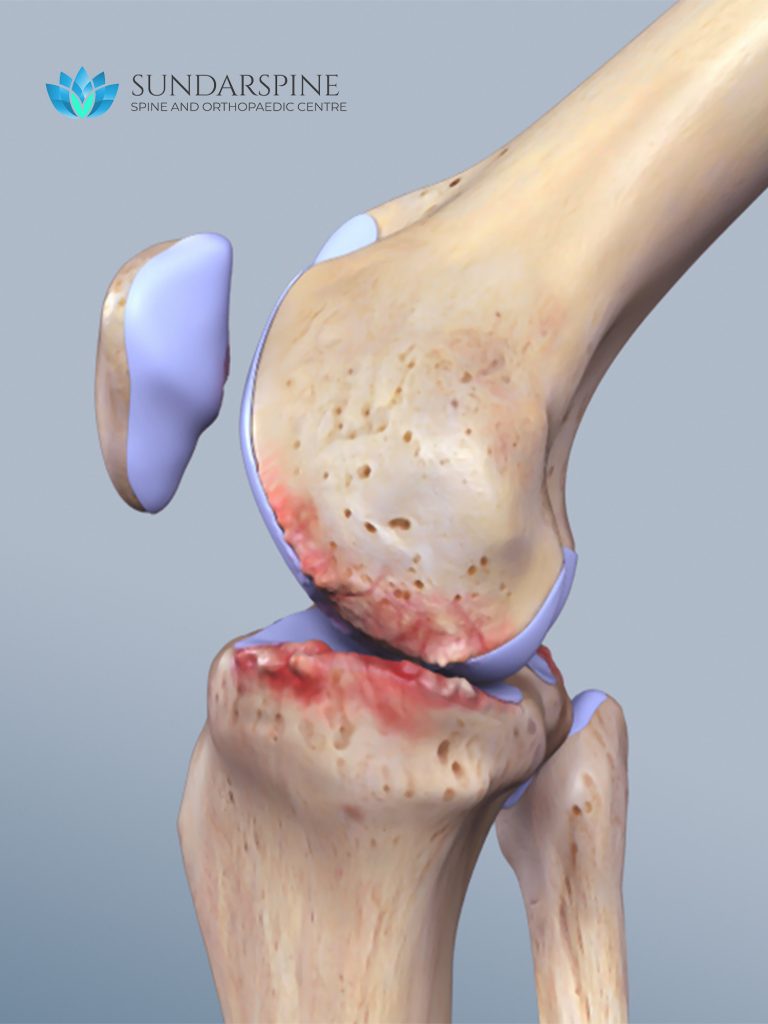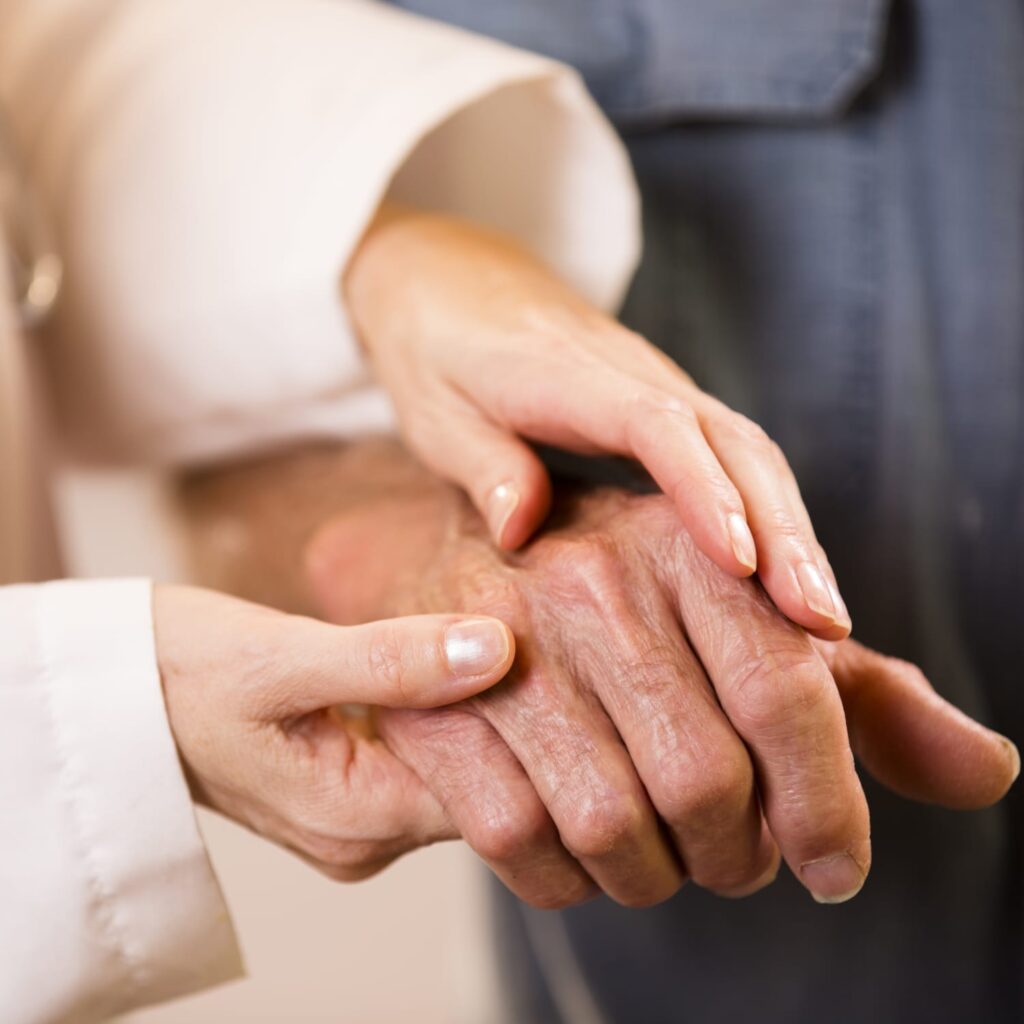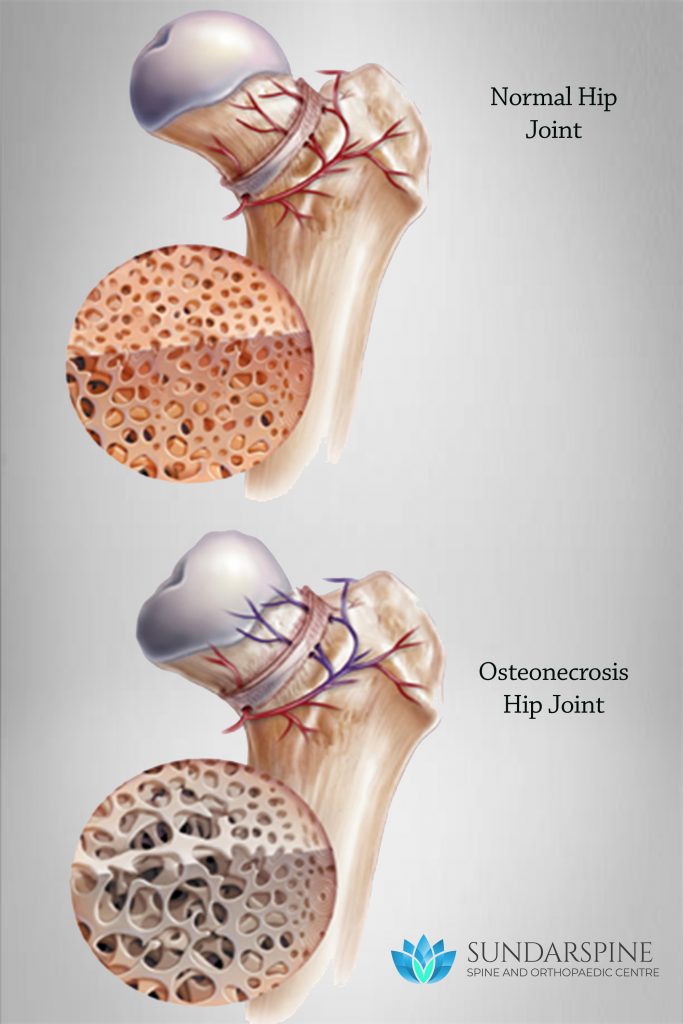Joint Pain
Osteoarthritis
Arthritic / Degeneration of joints
Gout
High uric acid causing joint pain
Rheumatoid Arthritis
Inflammation of synovial joints
Osteonecrosis
Bone decay due to poor blood supply
Osteoarthritis

Osteoarthritis is the most common form of arthritis, affecting millions of people worldwide. It occurs when the protective cartilage that cushions the ends of the bones wears down over time. Although osteoarthritis can damage any joint, the disorder most commonly affects joints in your hands, knees, hips and spine.
Osteoarthritis symptoms can usually be managed, although the damage to joints can’t be reversed. Staying active, maintaining a healthy weight and receiving certain treatments might slow progression of the disease and help improve pain and joint function.
Symptoms:
- Pain. Affected joints might hurt during or after movement.
- Stiffness. Joint stiffness might be most noticeable upon awakening or after being inactive.
- Tenderness. Your joint might feel tender when you apply light pressure to or near it.
- Loss of flexibility. You might not be able to move your joint through its full range of motion.
- Grating sensation. You might feel a grating sensation when you use the joint, and you might hear popping or crackling.
- Bone spurs. These extra bits of bone, which feel like hard lumps, can form around the affected joint.
- Swelling. This might be caused by soft tissue inflammation around the joint.
Risk factor: Older age, Obesity, Joint injuries, Repeated stress on the joint, Genetics
Causes: Osteoarthritis occurs when the cartilage that cushions the ends of bones in your joints gradually deteriorates. Cartilage is a firm, slippery tissue that enables nearly frictionless joint motion. Eventually, if the cartilage wears down completely, bone will rub on bone.
When to see a Doctor: Joint pain more than 2 weeks, affecting day-to-day activity
Treatment: Mainly by exercise and painkillers. Avoiding squating, sitting cross legged and climbing stairs. Severe, long term conditions may benefit from surgery.
Rheumatoid Arthritis

Rheumatoid arthritis is a chronic inflammatory disorder that can affect more than just your joints. In some people, the condition can damage a wide variety of body systems, including the skin, eyes, lungs, heart and blood vessels.An autoimmune disorder, rheumatoid arthritis occurs when your immune system mistakenly attacks your own body’s tissues.
Unlike the wear-and-tear damage of osteoarthritis, rheumatoid arthritis affects the lining of your joints, causing a painful swelling that can eventually result in bone erosion and joint deformity.
Symptoms:
- Tender, warm, swollen joints. Small joints of the hand are affected
- Joint stiffness that is usually worse in the mornings and after inactivity
- Fatigue, fever and loss of appetite
Risk Factors:
Experts at top hospitals believe that – Middle age, women, family history, genetics, smoking etc. are the risk factors
Causes: Rheumatoid arthritis is an autoimmune disease. Normally, your immune system helps protect your body from infection and disease. In rheumatoid arthritis, your immune system attacks healthy tissue in your joints. It can also cause medical problems with your heart, lungs, nerves, eyes and skin.
Treatment: Medical management is the mainstray of treatment. Its a life-long disease, hence strict adherence to the treatment is required to avoid sudden flare-up of the disease. Late diagnosis or unadvised stopping of medications may result in joint deformity which may require surgery.
gout

“King of diseases and the disease of the Kings”
Gout is a common and complex form of arthritis that can affect anyone. It’s characterized by sudden, severe attacks of pain, swelling, redness and tenderness in one or more joints, most often in the big toe.
An attack of gout can occur suddenly, often waking you up in the middle of the night with the sensation that your big toe is on fire. The affected joint is hot, swollen and so tender that even the weight of the bedsheet on it may seem intolerable.
Gout symptoms may come and go, but there are ways to manage symptoms and prevent flares.
Symptoms:
- Intense joint pain. Gout usually affects the big toe, but it can occur in any joint. Other commonly affected joints include the ankles, knees, elbows, wrists and fingers. The pain is likely to be most severe within the first four to 12 hours after it begins.
- Lingering discomfort. After the most severe pain subsides, some joint discomfort may last from a few days to a few weeks. Later attacks are likely to last longer and affect more joints.
- Inflammation and redness. The affected joint or joints become swollen, tender, warm and red.
- Limited range of motion. As gout progresses, you may not be able to move your joints normally.
Risk factor: Middle age men, red meat diet, alcohol, obesity, certain medications, family history, recent trauma or surgery, anti cancer drugs
Causes:Gout occurs when urate crystals accumulate in your joint, causing the inflammation and intense pain of a gout attack. Urate crystals can form when you have high levels of uric acid in your blood. Your body produces uric acid when it breaks down purines — substances that are found naturally in your body.
When to see a Doctor: Severe pain, disturbing sleep, difficulty standing and walking. swelling or redness in the joint
Treatment: Mainly medications, change in dietary habit (avoid red meat), avoidance of alcohol
Osteonecrosis

Osteonecrosis (also known as avascular necrosis) is a disease that results from loss of blood supply to the bone. Since bone is a living tissue which requires blood, this can lead to small breaks in the bone and eventual collapse.
Because this is most often seen at the ends of bones, your joints may be greatly affected, especially the hip joint. Medical experience has shown that wherever osteonecrosis causes the bone to degrade in a joint, arthritis develops.
Symptoms:
Pain can be mild or severe and usually develops gradually. Pain associated with avascular necrosis of the hip might center on the groin, thigh or buttock. Besides the hip, the areas likely to be affected are the shoulder, knee, hand and foot.
Some people develop avascular necrosis on both sides (bilaterally) — such as in both hips or in both knees.
Risk Factors: Middle age, smoking, chronic steroid use, injury – hip fracture, joint dislocation, sickle cell anemia
Causes: Osteonecrosis occurs when blood flow to a bone is interrupted or reduced. The unsupplied part begins to decay and cause pain. This most commonly occurs near the joint, causing collapse of the articular structure ultimately resulting in more pain and arthritis.
Treatment: Stage-I can be managed by medication and rest. Stage-II might require surgical decompression and/or bone grafting. Stage-III and IV might require extended surgical procedure depending on the joint, age of the patient and severity of symptoms.
Joint Pain
Joint related problems
Osteoarthritis
Arthritic / Degeneration of joints
Gout
High uric acid causing joint pain
Rheumatoid Arthritis
Inflammation of synovial joints
Osteonecrosis
Bone decay due to poor blood supply
Fractures
Bone injury and breakage
Closed fracture
Internal fracture of the bones
Non-union
Absence of bone healing
Open fracture
Visible (exposed) fracture of the bones
Osteomyelitis
Bone infection
Orthopaedic Conditions
Common Orthopaedic related problems
Plantar Fascitis
Heel pain
Osteoporosis
Low bone density / Bone weakness
Tennis elbow
Elbow pain
Vitamin D Deficiency
Low Vitamin D

Our World, Our Vision
We at SUNDARSPINE, believe in our promise to the world to provide Free access Healthcare Education to everyone. This site is a result of years of Planning and Hardwork. We are dedicated to help in your patient experience and aspire to increase our network globally and include a complete database of all health related information and guidance. We have just begun and we have a long way to go. Thank you in being a part of Us!!
We’d love to hear from you
Have any questions, Checkout
Download a FREE Ebook
Subscribe to our news letter
